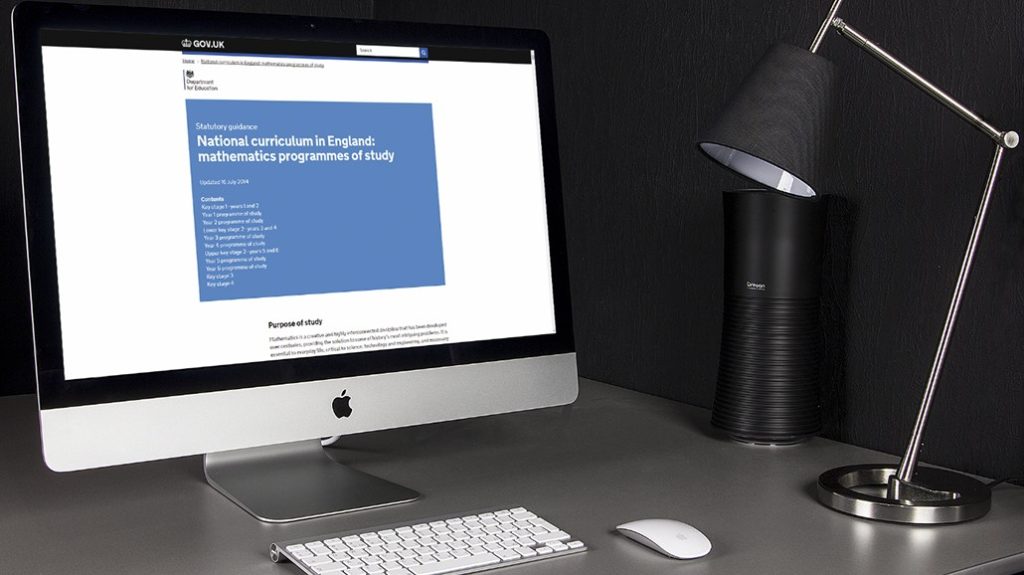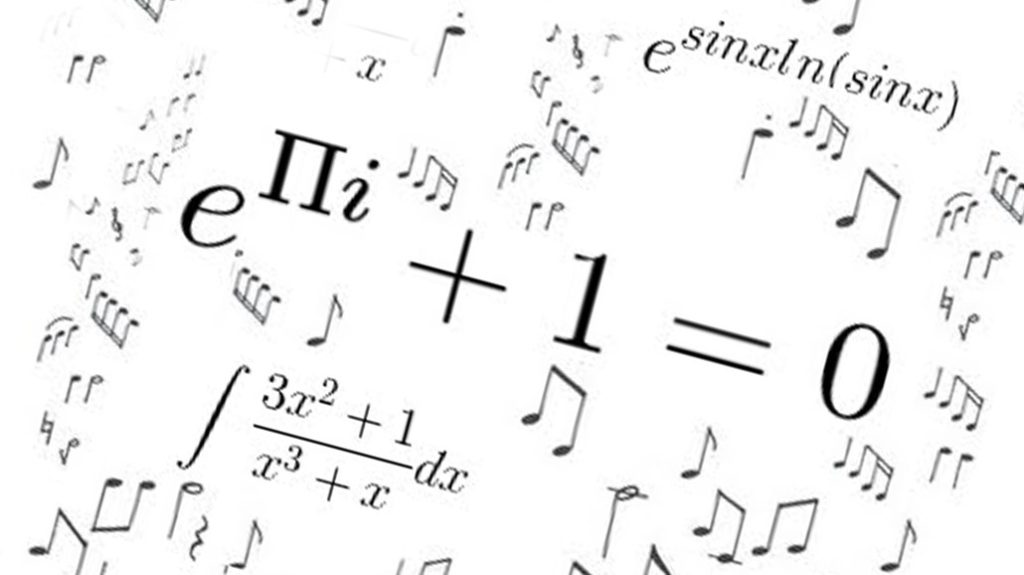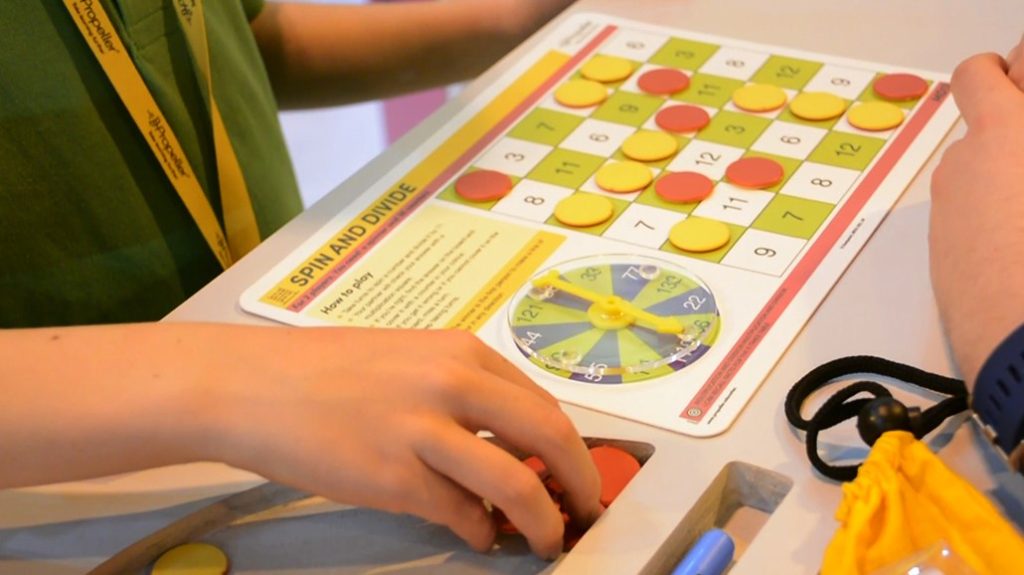What did fluency mean to me?
When fluency was first discussed as one of the three main aims of the National Curriculum for mathematics (DfE, 2013), I used to think it was about speed of recall of basic facts such as number bonds to 10 and 100, doubles of numbers to 10 and knowing the multiplication tables. Also, that it implied a lot of repetitive practice at certain skills so that these facts would be committed to memory. It seemed that fluency was caught up with the word ‘practise’ and that many other teachers may indeed have interpreted it in the same way. It is possible that children across the country are being given endless tables tests and worksheets on arithmetic calculations as a mundane approach to achieving fluency!
It is possible that children across the country are being given endless tables tests and worksheets on arithmetic calculations as a mundane approach to achieving fluency!

National Curriculum
Consulting the National Curriculum for KS1 and KS2, the opening aim says:
“become fluent in the fundamentals of mathematics, including through varied and frequent practice with increasingly complex problems over time, so that pupils develop conceptual understanding and the ability to recall and apply knowledge rapidly and accurately.”
The word practice seemed to jump out at me and hence my assumption that fluency and practice were intrinsically linked. Also, the word ‘rapidly’ which is where I got the idea of speed being important.
Likewise, note the implication here, that conceptual understanding will be developed if children practice a lot which is definitely not a given in my view. Does a parrot understand what it says when it copies phrases from people? There is no guarantee that practising something with great frequency will develop any (deeper) understanding.
The next paragraph went onto say:
“Pupils who grasp concepts rapidly should be challenged through being offered rich and sophisticated problems before any acceleration through new content. Those who are not sufficiently fluent with earlier material should consolidate their understanding, including through additional practice, before moving on.”
While agreeing whole heartedly with the first part of this, the second part seems to infer again that more practice will save the day, and it definitely seems to be linked to the idea of fluency. It would appear from this that some children may never get out of an endless cycle of practising routine facts before they can progress to something more interesting.
Nick Gibb
The Minister of state for Education, Nick Gibb said at the London Thames Maths Hub Primary Conference (Gibb, 2015):
“An over-emphasis on concepts at the expense of practice, fluency and, through that, understanding meant that too many pupils simply did not know how to perform calculations.”
In the same speech, he went on to say:
“Instant recall of facts like times tables is crucial because the working memory is small and so they need to be committed to long term memory, [omitted…] The year by year approach sets out greater clarity and the focus on fluency in the essentials of maths allows time for pupils to practise more to ensure deep knowledge.”
Again, both of these paragraphs seem to infer that lots of practice at learning basic facts will aid fluency and lead to deep knowledge! Is it to be a ‘death by worksheet’ scenario? What will this do to promote enjoyment of maths?

Forster
Forster (2014) wrote an interesting article about “mathematical fluency without drill and practice” in the Association of Teachers of Maths Journal – Mathematics teaching issue 240. In this, he talks about the idea of “mathematical etudes”, similar to those in music. The idea is scales and arpeggios are learnt through some interesting studies in music rather than through a drill and skill approach.
As he says:
“Musical etudes began as technical exercises for private practice, but are best known today as complete compositions exploring a particular technical problem in a satisfying way. They are far more interesting than practising scales!”
From a maths point of view, he would like to promote tasks that look as though they are an easy way to generate some routine practice, but which if you dig under the surface have something a little more interesting going on (Andrews, 2002). This sounds like a much better approach at incorporating some practice while maybe investigating a much richer activity. I can think of an example I have used that would fit this when I have asked year 4 and year 5 children to investigate Kaprekar’s constant. This involves a lot of practice with written subtraction using four digit numbers which eventually result in a constant: 6174. It was named after the Indian mathematician D. Kaprekar. More can be found here.
So, is lots of practice what we mean by fluency?
I have changed my views on this over the last eighteen months or so. I now think that it relates much more closely to something first described by Tobias Dantzig (1954) back in the 1950’s called ‘Number sense’. More recently Devlin (2000) and Boaler (2015) discuss this too.
Devlin (2000) discusses the ideas that all human beings have an innate sense of number, and were possibly born with this. He goes on to say that numbers have meaning for us and that we have a natural ability to notice changes to collections when something has been added or removed. In a more recent online twitter post for the “Huffington Post” (Devlin, 2017), he goes onto say that
“Number sense is important because it encourages students to think flexibly and promotes confidence with numbers.”
He continues by referring to research that shows that “students who lack a strong number sense have trouble developing the foundation needed for even simple arithmetic, let alone more complex mathematics.”

Jo Boaler
Boaler (2015) wrote an article entitled ‘fluency without fear’ where she describes how politicians in the UK want children to memorise times tables up to 12 x 12. She goes on to say how she predicts that levels of maths anxiety will increase and that children would be driven away from studying maths later on. She discusses ‘Number sense’ and says that this is not just about memorising facts but “includes learning of math facts along with deep understanding of numbers and the ways they relate to each other.” She includes references to research about how ‘high achievers’ can look flexibly at numbers and can employ efficient strategies to solve calculations while the ‘low achievers’ don’t. For example, when asked to calculate 21-16, the low achievers began at 21 and counted backwards 16. Something that is very difficult to do. While the high achievers could change the calculation to 20-15 which is much easier to do.
Boaler (2015) considers ‘fluency’ by quoting Parish (2014, p. 159)
“Parish, defines fluency as ‘knowing how a number can be composed and decomposed and using that information to be flexible and efficient with solving problems.”
So, what does fluency mean to me now?
So, as I reflect on this, it seems to me that being flexible with numbers, developing number sense, understanding how numbers relate to each other, seeing how numbers can be composed and decomposed is all part of building up what may be termed ‘fluency’. This is supported by Christie, writing for the NCETM (National Centre for Excellence in the Teaching of Mathematics) in their Primary and Early Years magazine (95) and can be read here. She discusses the importance of fluency in addition and subtraction facts in Key stage 1, Children can learn certain facts such as number bonds to 10 but need to be taught strategies such as ‘bridging 10’ to help achieve fluency. For example, knowing 8 + 5 by seeing it as 8 + 2 + 3.
McClure (2014) writing on the Nrich website makes some interesting points on fluency. Firstly, she comments that although fluency mostly relates to Number, it can also an important part of other areas of the maths curriculum. Also, she comments that fluency is a hot topic in the new standards in the US too:
“Students exhibit computational fluency when they demonstrate flexibility in the computational methods they choose, understand and can explain these methods, and produce accurate answers efficiently.”
I wonder where the idea of ‘fluency’ started then? Which side of the Atlantic made this a priority first?
McClure (2014) continues by referring to the work of Russell (2000) who breaks fluency into three elements: efficiency; accuracy; flexibility and gives further detail:
Efficiency – this implies that children do not get bogged down in too many steps or lose track of the logic of the strategy. An efficient strategy is one that the student can carry out easily, keeping track of sub-problems and making use of intermediate results to solve the problem.
Accuracy depends on several aspects of the problem-solving process, among them careful recording, knowledge of number facts and other important number relationships, and double-checking results.
Flexibility requires the knowledge of more than one approach to solving a particular kind of problem, such as two-digit multiplication. Students need to be flexible in order to choose an appropriate strategy for the numbers involved, and also be able to use one method to solve a problem and another method to check the results.
Consequently, it seems to me that fluency is not just about memorising some facts. It’s about understanding how methods work, why they work and when to apply them. Procedural fluency (being familiar with procedures and methods) needs to be developed alongside conceptual fluency (understanding why the procedures and methods work) and connections need to be made! Children learning facts in isolation may well not see the bigger picture. They may not be able to make connections that would enable them to be more efficient and flexible in their approaches and even if they remembered certain facts many years later, it could be that they have no idea of how they can be applied.

So how can we encourage ‘fluency’?
Devlin (2017) refers to the maths educator Marilyn Burns who suggests some ways we can help to teach number sense. All of which I think apply directly to how we can develop fluency in our classrooms. They are:
- Model different methods for calculating
- Ask students regularly to calculate mentally
- Enable class discussions about calculation strategies
- Make estimation an integral part of calculations
- Question students about how they reason numerically
- Pose numerical problems that have more than one possible answer.
From this we can see that as teachers, we need to provide more than one approach, encourage our pupils to discuss their methods and approaches and ensure we give problems sometimes that have more than one outcome. McClure (2014) also promotes the use of models and images to promote procedural and conceptual understanding. There is much research from the past by Bruner, Piaget and Dienes to name just a few, who have showed that children learn from the Concrete, via the Pictorial to the Abstract (CPA approach) and that structured equipment can help to do this.
I also think that the use of games needs a mention. Games can promote a way of repetitive practice which can be highly engaging and motivating. For many children, once a concept has been understood, games can help to develop fluency and recall of many facts with a specific learning objective in mind. There can also be reasoning involved as children seek out the best strategies to win games and this can encourage children to think more deeply about the approach they adopt. Games are often fun and enjoyable – where ideas can be learnt and rehearsed in a positive climate without raising anxiety levels. They also provide opportunities for mathematical discussion between peers and therefore opportunities to share different approaches and techniques. Children (and adults) will often spend a great deal of time playing a game – driven on maybe by a sense of competitiveness – and this can provide the opportunity for further practice and possibly with extended challenges.
Games can promote a way of repetitive practice which can be highly engaging and motivating.
In conclusion, I believe fluency involves both concepts and procedures. It involves having number sense and being able to make connections in mathematics. It can be achieved through using models and images to help support the journey from concrete to abstract. It includes discussion in a culture of ‘no answer being a stupid one’. It will utilise a wide variety of activities such as games and investigations to encourage reasoning and understanding and is an on-going aspect of learning mathematics and applying efficient strategies throughout the primary school journey and beyond!
Written by Ruth Bull
Ruth combines freelance advisory work with primary teaching. She is an accredited NCETM professional development lead, a maths primary specialist teacher (MaST qualified) with an MA (Ed) and a BSc in Maths and Computer Science. She has recently become a member of the Advisory Committee for Mathematics Education.
References
Andrews, P., (2002) Angle Measurement: An opportunity for equity. Mathematics in School, Issue 31, Vol 5, pp16-18
Boaler, J., (2015) Fluency without Fear: Research Evidence on the Best Ways to Learn Math Facts Accessed online at https://www.youcubed.org/fluency-without-fear/ [Accessed on 7th March 2017]
Dantzig, T. (1954) Number, the Language of Science, Free Press, NY (republished 1967)
Department for Education (DfE) (2013). Mathematics programmes of study: Key stage1 &2, National curriculum in England, September 2013, London, UK: DfE. Accessed online at https://www.gov.uk/government/uploads/system/uploads/attachment_data/file/335158/PRIMARY_national_curriculum_-_Mathematics_220714.pdf [Accessed on 6th March 2017]
Devlin, K.J., (2000) The Maths Gene: Why everyone has it, but most people don’t use it. Phoenix, London.
Devlin, K.J., (2017) Number Sense: the most important mathematical concept in 21st Century K-12 education, The Huffington Post, Accessed online at http://www.huffingtonpost.com/entry/58695887e4b068764965c2e0?timestamp=1483299488473 [Accessed on 7th March 2017]
Forster, C., (2014) Mathematical Fluency without Drill and practice, Association Teachers of Mathematics, Mathematics Teaching, Issue 240, pp5-7
Gibb, Nick, Department for Education (DFE), corp creator. (2015) Press release accessed online at: https://www.gov.uk/government/speeches/nick-gibb-speech-on-governments-maths-reforms [Accessed on 6th March 2017]
McClure, L., (2014) Nrich: Developing Number fluency, What, Why and How accessed on line at: http://nrich.maths.org/10624 [Accessed on 7th March 2017]
Russell, Susan Jo. (May, 2000). Developing Computational Fluency with Whole Numbers in the Elementary Grades. In Ferrucci, Beverly J. and Heid, M. Kathleen (eds). Millenium Focus Issue: Perspectives on Principles and Standards. The New England Math Journal. Volume XXXII, Number 2. Keene, NH: Association of Teachers of Mathematics in New England. Pages 40-54.
This post originally appeared on the propeller.education website. Propeller is a part of the Show-me brand.

